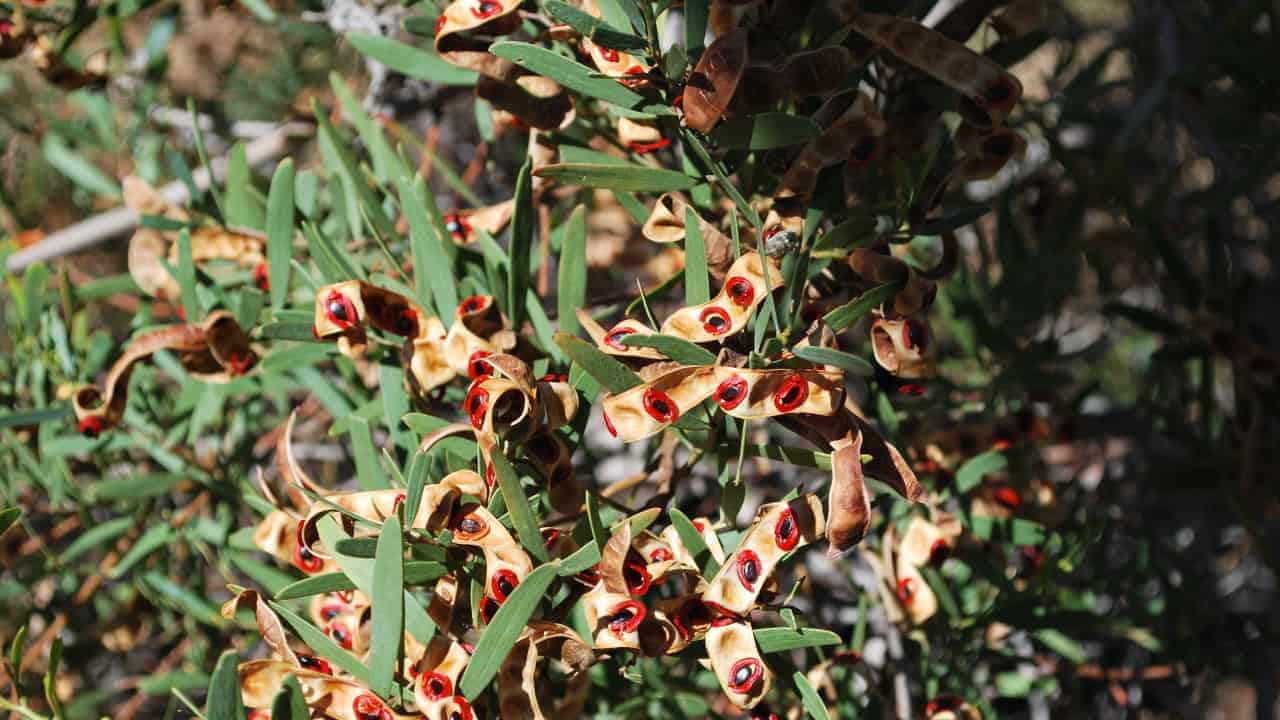Red-eyed Wattle
Acacia cyclops
Red-eyed Wattle is a dieback-resistant species of Acacia. Tolerant of sea spray and saline soils, this species of wattle is found naturally in coastal heath or scrubland areas along the southwest coast of W.A and into South Australia. It is often grown to stabilise coastal sand dunes in these areas.
This plant’s twisted seed pods produce edible red-stalked seeds that were traditionally ground into flour to make bread. With its versatile nutty flavour, wattleseed can also be used as a coffee substitute and to enhance sweet and savoury dishes. Gum from the stem was also eaten, while the sticky juice from young seed pods were used for sunscreen, insect repellent and as a treatment for eczema.
This species bears clusters of golden yellow flowers, sometimes sparsely throughout the year but most prolifically through the warmer months. From October to January, the plant grows long, flat seed pods that twist as they open, revealing attractive red-ringed seeds that are ready to be consumed.
Red-eyed Wattle is a salt-resistant, drought-tolerant species that prefers an easily draining loamy or sandy soil. For best results, we recommend growing in full sun.
With growth frequently around 3m tall and 3m wide, this wattle is best kept in the ground as a tree or shrub.
Aboriginal name:
- Wilyawa (Noongar)
Does Red-eyed Wattle produce fruit?
In Summer, this plant produces seed pods bearing small edible seeds that were traditionally ground into flour for making bread. Though birds and other animals ate the seed pods, they’re not quite so palatable for humans.
Do I need to fertilise my Red-eyed Wattle?
You shouldn’t need to fertilise this tree if it’s growing in the ground in a typical garden, however, it may help to sprinkle some organic slow release fertiliser at the start of the flowering season.
How often should I prune my Red-eyed Wattle?
Mature Acacia trees don’t take well to pruning, but a young Red-eyed Wattle may need some formative tip pruning to achieve a desired shape. How you prune your tree will depend on the style you want, but we recommend waiting until early to mid-Spring (or whenever the risk of frost in your area has passed). If growing your Red-eyed Wattle in a (large) pot, we suggest pruning lightly and only when needed.
This Plant Is Available As A Dried Herb From Our Shop

Suitable for full-sun

Suitable for part-shade

Suitable for pots

Dimensions:
Height 3m
Width 3m

Tolerates drought

Tolerates sandy soils

Tolerates salt

Fruits from:
Year 2

Bird attracting

Attracts bees & insects

Suitable for gaps

Suitable for hedging/screening

Provides shade

